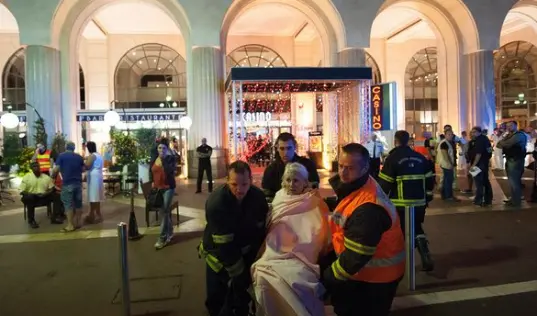In December 2014, a middle-aged man driving a car in Dijon, France, mowed down more than a dozen pedestrians within 30 minutes, occasionally shouting Islamic slogans from his window.
The chief prosecutor in Dijon described the attacks, which left 13 injured but no one dead, as the work of a mentally unbalanced man whose motivations were vague and “hardly coherent.”
A year and a half later, after Mohamed Lahouaiej Bouhlelslaughtered dozens of peoplewhen he drove a 19-ton refrigerated truck through a Bastille Day celebration on Thursday in Nice, France, the authorities did not hesitate to call it an act of Islamic terrorism. The attacker had a record of petty crime but no obvious ties to a terrorist group, yet the French prime minister swiftly said Mr. Lahouaiej Bouhlel was “a terrorist probably linked to radical Islam one way or another.”
The age of the Islamic State, in which the tools of terrorism appear increasingly crude and haphazard, has led to a reimagining of the common notion of who is and who is not a terrorist.
Instances of wanton violence by deranged attackers — whether in Nice or in Orlando, Fla. — are swiftly judged to be the work of terrorists. These judgments occur even when there is little immediate evidence that the attackers had direct ties to terrorist groups and when they do not fit a classic definition of terrorists as those who use violence to advance a political agenda.
“A lot of this stuff is at the fringes of what we would historically think of as terrorism,” said Daniel Benjamin, a former State Department coordinator for counterterrorism and a professor at Dartmouth College. But, he said, “the Islamic State and jihadism has become a kind of refuge for some unstable people who are at the end of their rope and decide they can redeem their screwed-up lives” by dying in the name of a cause.
Mr. Benjamin said this also led the news media and government officials to treat violence like the Nice attack differently from other mass attacks, like shootings at schools and churches that have been carried out by non-Muslims.
“If there is a mass killing and there is a Muslim involved, all of a sudden it is by definition terrorism,” he said.
The spectrum of terrorism is widening and now includes attacks loosely inspired by the Islamic State, those carried out by its affiliate groups and attacks directed by the group’s leadership. All have drawn public condemnation and concern, but the plots organized and executed by the Islamic State usually prompt greater concern from the authorities.
On Saturday, a bulletin on the Islamic State’s Amaq News Agency channel described Mr. Lahouaiej Bouhlel as a “soldier of the Islamic State” who answered a call to attack nations involved in the military campaign against the group. But the bulletin gave no specifics about the extent of the attacker’s ties to the terrorist network.
On one hand, there is now good reason for government officials to make immediate assumptions after some mass killings that the Islamic State has played a role, however indirect. The group’s ideology, spread widely through social media and slick propaganda videos, appears to have inspired a scourge of violence for more than a year: including the shooting in December in San Bernardino, Calif.; the mass killings last month at a gay nightclub in Orlando; and the deadly attack early this month at a cafe in Bangladesh. These were in addition to attacks that top Islamic State operatives apparently planned directly, like the Paris assaults in November and the Brussels bombings in March.
In September 2014, the spokesman for the Islamic State put out a call for the group’s followers to attack Westerners by any means possible, and to do so without awaiting further instructions from the group’s leaders.
(NYT)
 简体中文
简体中文

